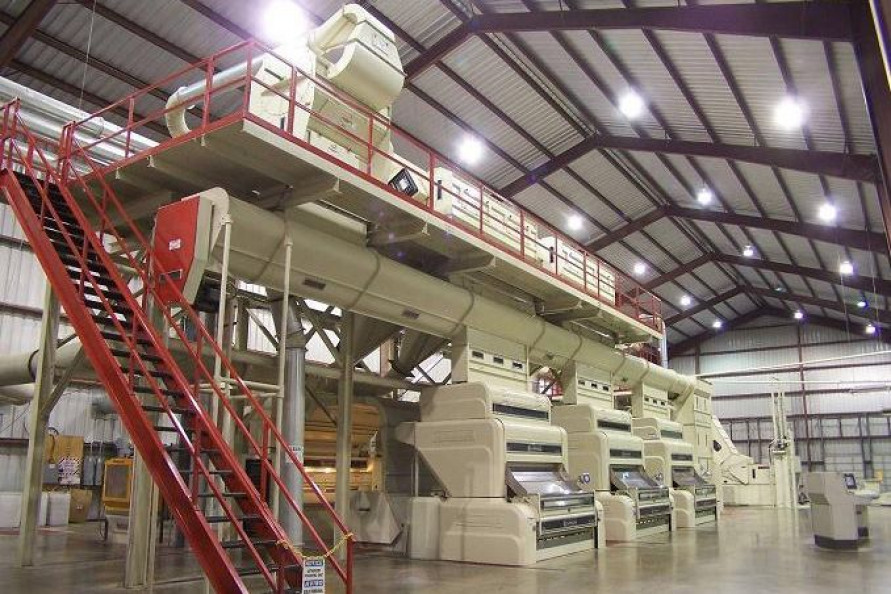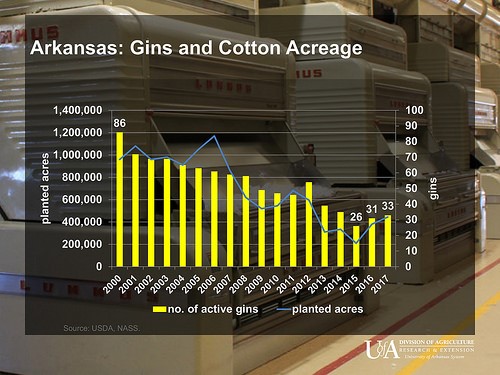The number of active cotton gins in Arkansas rose to 33 in 2017, paralleling an increase in cotton acres, according to statistics from the National Agricultural Statistics Service.
“With a recovery in cotton acres the last couple of years, Arkansas is also seeing some gins come back to life,” said Scott Stiles, Extension economist for the University of Arkansas System Division of Agriculture. “In 2017, we saw two more gins operate than in 2016 – one each in Craighead and Lee counties.”
Arkansas farmers planted 445,000 acres of cotton in 2017, up from 380,000 in 2016. Cotton acres have been in slow decline since 2000, with the exception of 2006, when growers planted 1.17 million acres.
Stiles also said the NASS numbers pegged another increase. “The trend toward much larger and higher volume gins is certainly continuing,” he stated. “A gin is definitely a massive investment in equipment that requires a lot of volume to make the numbers work.”
Of the 33 operating gins in 2017, 23 of them ginned 20,000 bales or more. In 2016, only 17 gins handled the same volumes.
Craighead and Mississippi counties had the largest number of working gins in 2017, each with seven. Ashley County had four, St. Francis had three, and Lee and Poinsett counties each had two. Clay, Chicot, Crittenden, Desha, Greene, Lincoln, Monroe and Philipps counties each had one.
However, low cottonseed prices may put the brakes on growth, Stiles said.
“We may find in 2018 that even increasing cotton acreage may not be enough to sustain gin numbers in the state,” he said.
“From discussions at our winter production meetings, I did hear of at least one gin that did not plan to operate this fall,” Stiles said. “They cited low cottonseed prices as the reason. Earlier this year, cottonseed prices fell to decade lows. Revenue from seed sales is the lifeblood for gins.”
Cottonseed prices spiked in June 2014 at $460 a ton and sank to $130 per ton in November 2017.
Mary Hightower is a communications specialist with the University of Arkansas System Division of Agriculture.
Πηγή: Cotton Grower


